Physical Address
304 North Cardinal St.
Dorchester Center, MA 02124
Physical Address
304 North Cardinal St.
Dorchester Center, MA 02124

Value refers to the lightness or darkness of tones, essential for creating depth & form. It defines how light interacts with objects, shaping their appearance through highlights, mid-tones, and shadows.
For example, in a black and white photograph, the infinite variations of gray convey planes, textures, and depth, demonstrating the power of value to suggest form without color.
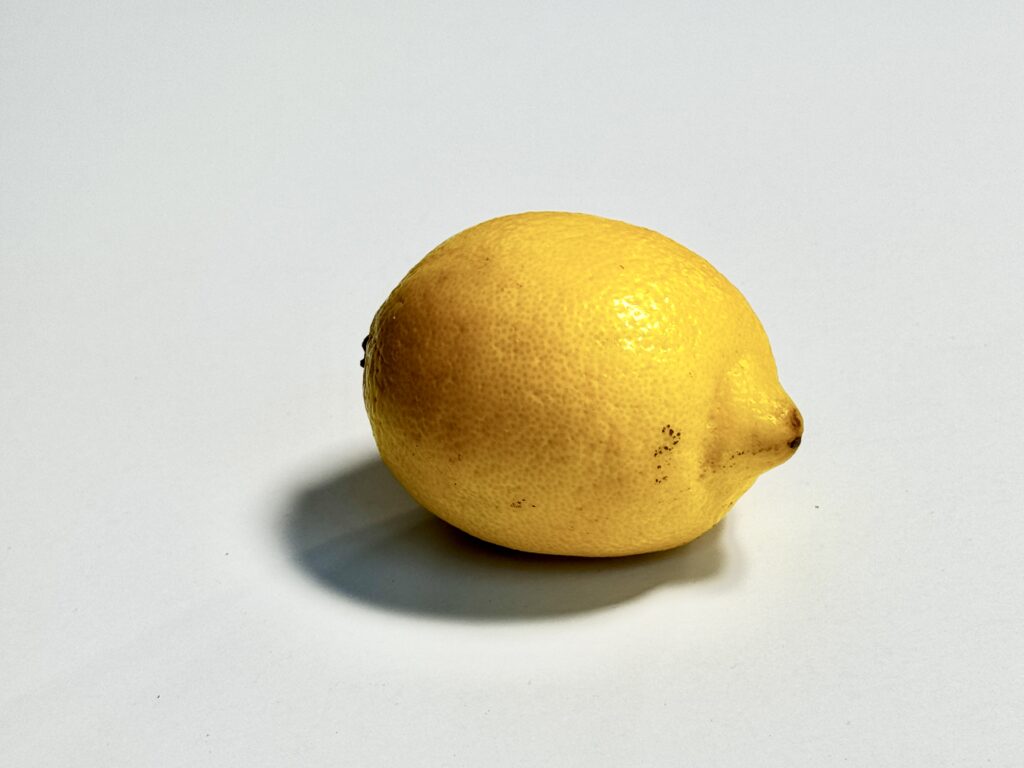

The position of the light source determines how light and shadows are distributed on an object.
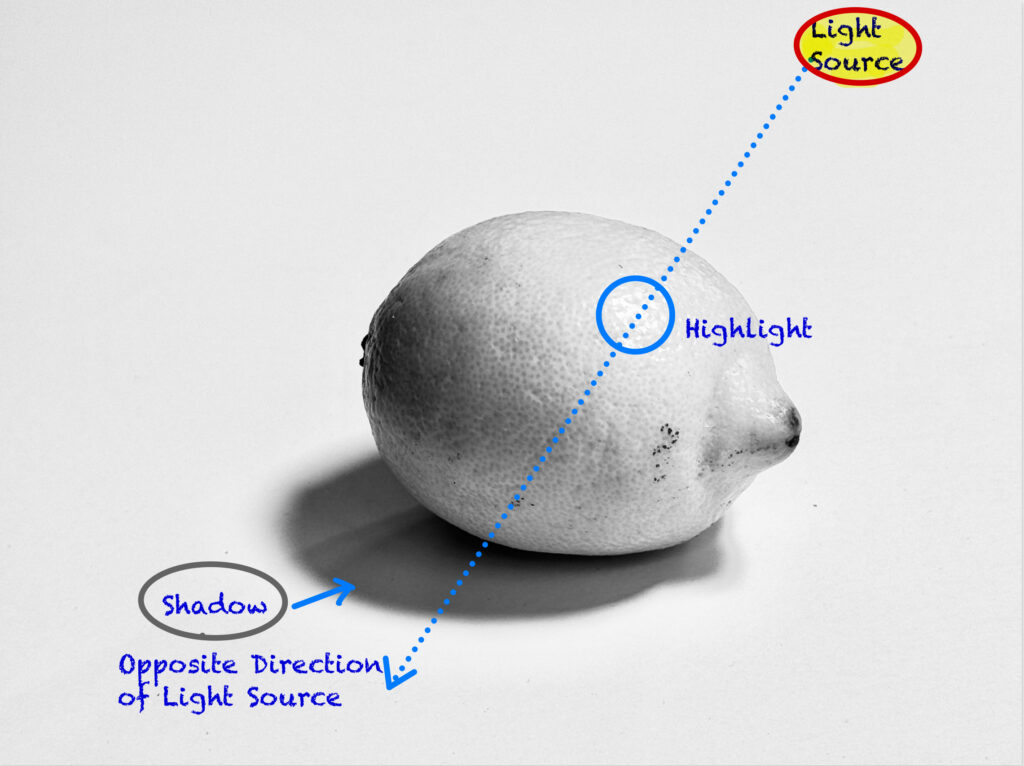
In this example, observe the highlight where light directly hits the lemon. If you draw an imaginary line connecting the highlight and the cast shadow and extend it outward, it points to the light source. This illustrates a key principle: The cast shadow always falls on the side opposite the light source.
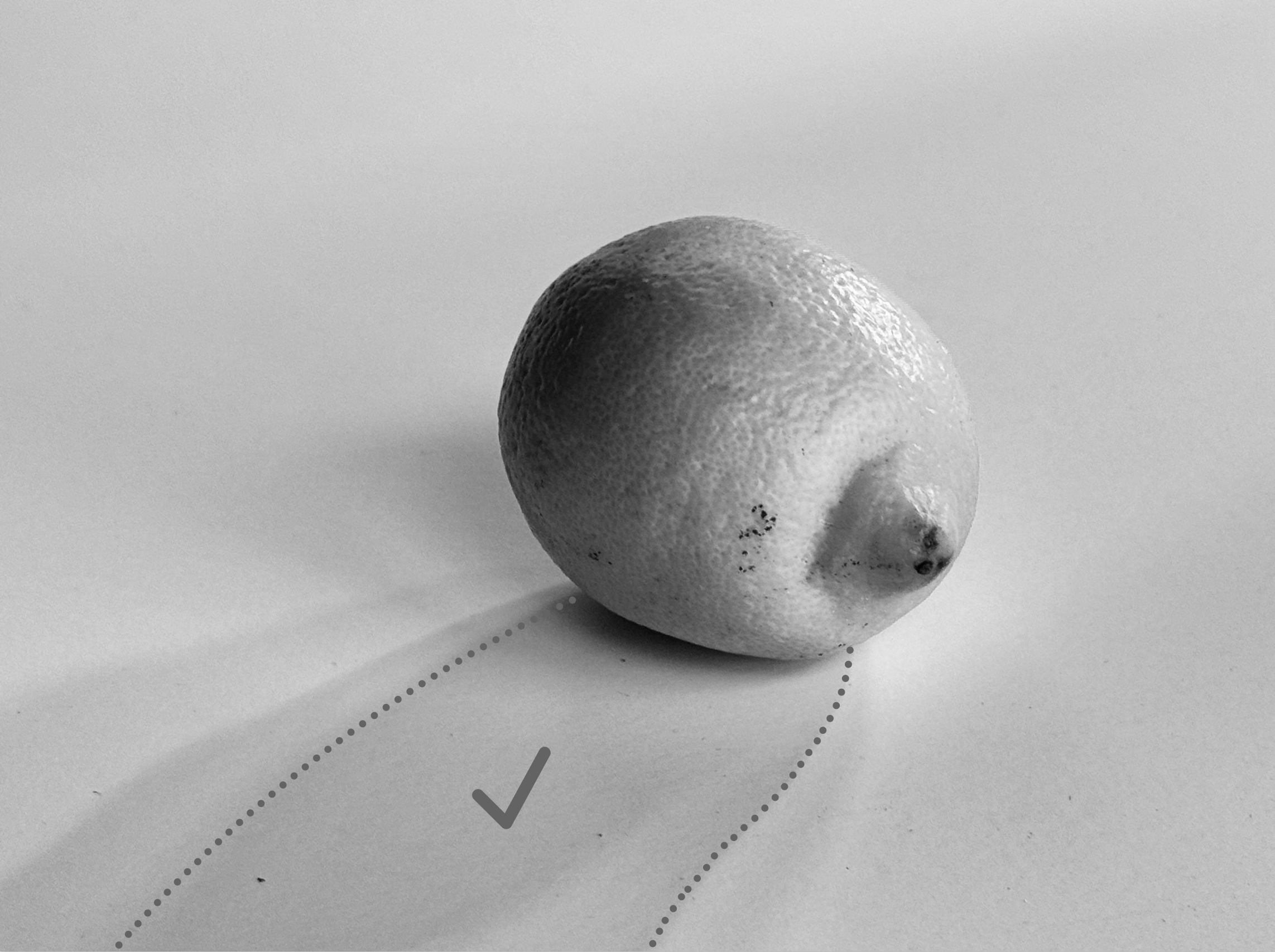
Under artificial lighting with multiple light sources, multiple shadows are cast. Including too many shadows in work can create confusion. In such cases, it’s best to select the most dominant shadow to maintain clarity.
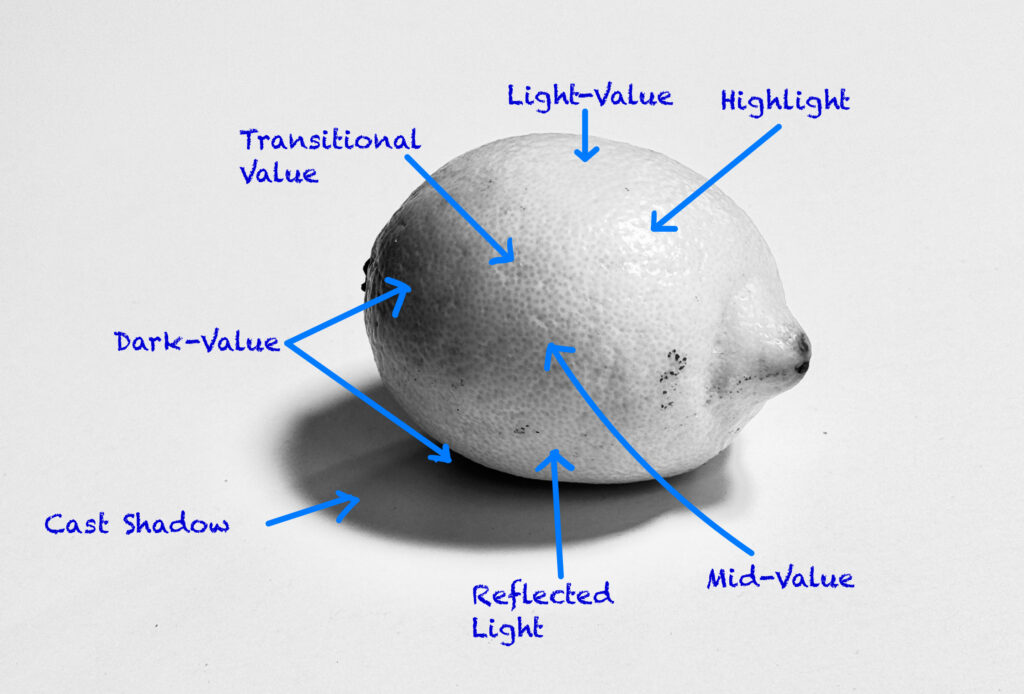
Value is not just about light and dark; it’s about perception. Our eyes perceive value relative to the surrounding tones, which can create optical illusions.

This demonstrates the principle of simultaneous contrast, where identical values appear different depending on their background. The mid-gray circle looks darker against a light background and lighter against a dark background. This phenomenon is a powerful tool for artists to manipulate and control value adjustments, creating depth, emphasis, and emotional impact.
From my teaching experience, reflected light is one of the most challenging concepts for beginners. Students often make the reflected light too bright because of an optical illusion: surrounded by dark shadows, the reflected light appears lighter than its actual value. This is a perceptual trap!
Keep in mind that reflected light is generally created by white, light-valued, or reflective surfaces.
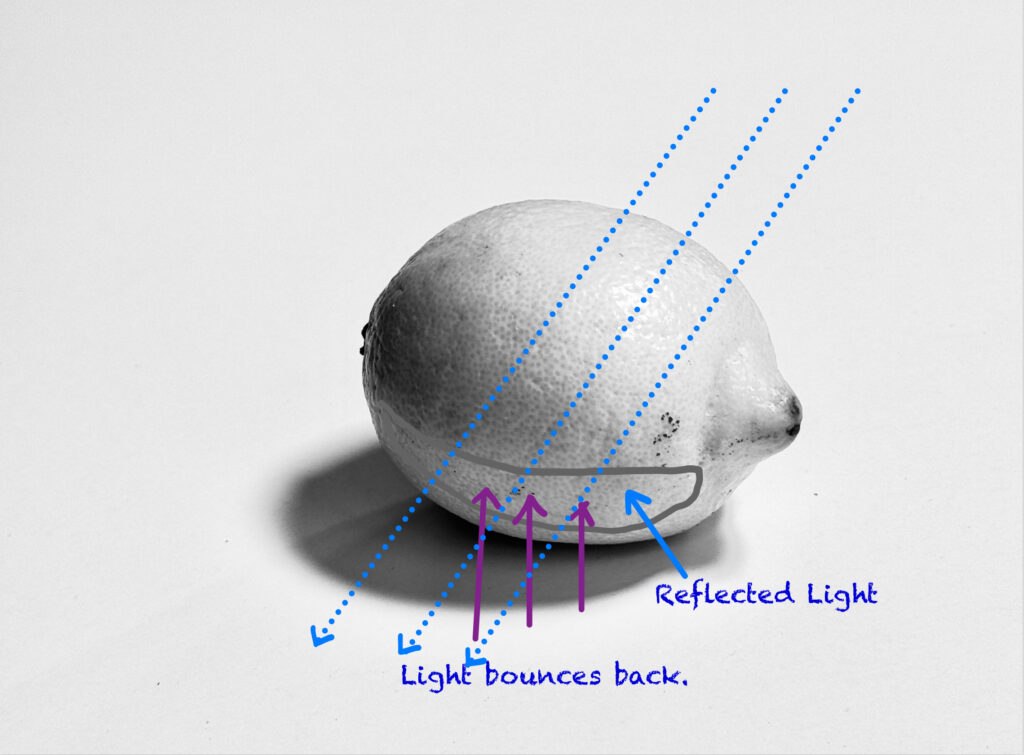
Dark-valued or soft materials absorb light and do not produce reflected light.
Please watch the video demonstration of Light and Shadow.